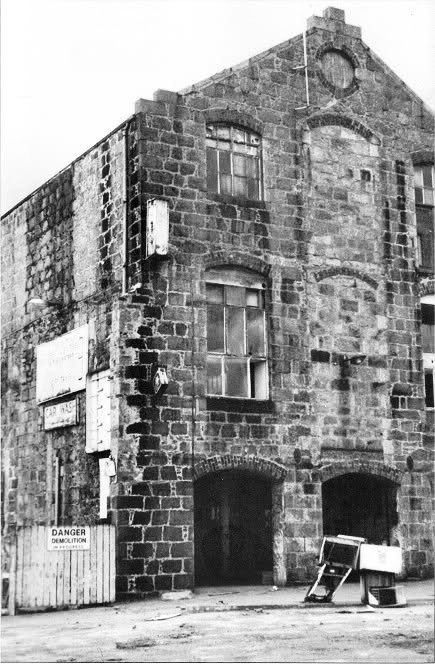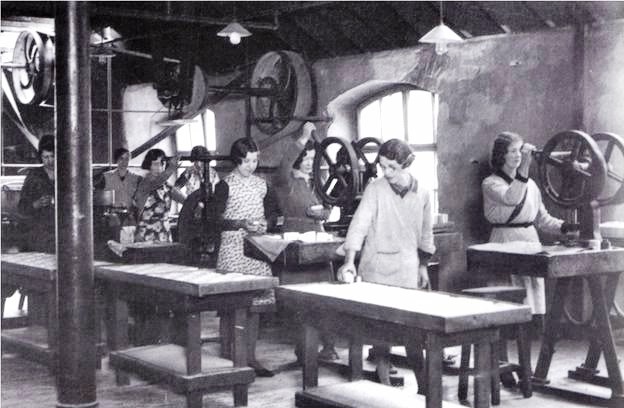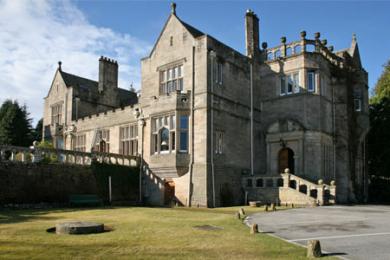Soapy Ogston’s – A Ogston & Sons, Victorian Soap and Candle Factory (1802), Gallowgate.
Alexander M Ogston, was a flax dresser who went on to establish a successful business manufacturing Soap and Candles. By the time the Alexander Ogston died in 1869, he was resident in a fine Town House in the recently developed Golden Square (No.9), and the firm became a household name as Ogston & Tennant under his Son, Col James ‘Soapy’ Ogston, and clearly this was a ‘major’ concern.
William Smith, Sr (b1820) came from the North country, and was a Warehouseman (Soap Works) in A. Ogston & Sons. He died some years before his highly respected son. He was a man of gentle nature, capable in his work and conscientious in his duties in the sphere in which he lived and moved.
William Smith Jr., (b.1851) belonged to Banchory, Aberdeenshire. He was a Dispatch Clerk c.1877 with A. Ogston & Sons
‘Soapy’ Ogston’s Premises

Began as A Ogston and Son an old established Soap and Candle maker based in the Gallowgate area and was founded in 1802. Colonel James Ogston later to be known as ‘Soapy Ogston inherited the business from his father. In 1892 he merged the Company with Glasgow based soap and candle works of Charles Tennant & Co. Ltd. to become Ogston and Tennant.

On 28 June 1910 they suffered a great fire which engulfed and destroyed the Factory. Reports mention machinery crashing through the floors. Damage totalled £80,000. In 1911 the Company agreed to an “Association” with Lever Brothers and after the 2nd World War, they became part of the Company until they ceased trading in the 1970s.
Residential Piles.
Ardoe House South Deeside Road, Banchory-Devenick, was built in 1878 in the Scottish Baronial style and was designed by James Matthews (1819-98) for the Aberdeen soap-maker, Alexander Ogston. Interior work by Alexander Marshall McKenzie Architect. in 1883. Ardoe House was later sold and converted into a Hotel in 1947. The White Lady, the spirit of a former owner’s daughter Katherine Ogston who committed suicide has been seen in various parts of the Hotel.
Norwood Hall Hotel, Garthdee Road, Cults is said to have 3 ghosts whose apparitions have been seen on several occasions. One is said to be that of Col James Ogston (a previous owner), his wife, and his mistress. In 1861 Mrs Helen Morrison, wife of Baillie William Adamson (a London stockbroker) bought the property of Norwood. Mr Adamson liked the name of Norwood and gave it to the house that he built on the land his wife had bought. Mr Adamson died shortly after the house was built in 1886. Mrs Morrison then sold the property to John Taylor of Regent’s Park just 2ears later. It was then later resold again in 1872 to a Colonel James (Soapy) Ogston, who partly rebuilt the house in 1881 before moving his family across the River Dee to Ardoe House and moving his mistress into Norwood.
It is believed that James originally purchased Norwood in 1872 and rebuilt it in 1881 for his mistress so they could meet whilst he lived in Ardoe House across the River Dee with his young family. After years of torment both his his wife Anne and his mistress wanted James to leave the other but James refused. It is said that Norwood is now haunted by the 2 lovers and his wronged wife who longs for revenge for the torrid years she had to endure. The apparition of James has been seen standing in front of the log fire in the dining room. The ghost of his mistress has been reported to haunt the main stairs (perhaps looking for her lover). His wife is the most active of the 3 with reports of her being seen in the hall, the kitchen, and also the dining room. On the grounds of Norwood is were the Pitfodels Castle once stood.

Interior work by Alexander Marshall McKenzie Architect. in 1883. Ardoe House was later sold and converted into a Hotel in 1947. The White Lady, the spirit of a former owner’s daughter Katherine Ogston who committed suicide has been seen in various parts of the Hotel.
Norwood Hall Hotel, Garthdee Road, Cults is said to have 3 ghosts whose apparitions have been seen on several occasions. One is said to be that of Col James Ogston (a previous owner), his wife, and his mistress. In 1861 Mrs Helen Morrison, wife of Baillie William Adamson (a London stockbroker) bought the property of Norwood. Mr Adamson liked the name of Norwood and gave it to the house that he built on the land his wife had bought. Mr Adamson died shortly after the house was built in 1886. Mrs Morrison then sold the property to John Taylor of Regent’s Park just 2ears later. It was then later resold again in 1872 to a Colonel James (Soapy) Ogston, who partly rebuilt the house in 1881 before moving his family across the River Dee to Ardoe House and moving his mistress into Norwood.
It is believed that James originally purchased Norwood in 1872 and rebuilt it in 1881 for his mistress so they could meet whilst he lived in Ardoe House across the River Dee with his young family. After years of torment both his his wife Anne and his mistress wanted James to leave the other but James refused. It is said that Norwood is now haunted by the 2 lovers and his wronged wife who longs for revenge for the torrid years she had to endure. The apparition of James has been seen standing in front of the log fire in the dining room. The ghost of his mistress has been reported to haunt the main stairs (perhaps looking for her lover). His wife is the most active of the 3 with reports of her being seen in the hall, the kitchen, and also the dining room. On the grounds of Norwood is were the Pitfodels Castle once stood.

Kildrummy Castle
The 17th and 18th centuries were largely a period of steep decline for Kildrummy Castle . The exceptionally high quality of its stone led to its use as a handy quarry for the area, and the mighty Snow Tower collapsed in 1805. However, in 1898 the castle was acquired by Colonel James Ogston, who until his death worked steadily to restore parts of it. He died in 1931
Kildrummy’s New Castle
Kildrummy Castle Hotel overlooks the ruins of the 13th century Kildrummy Castle. The house was originally built and owned by Colonel James Ogston, being known as Soapy Ogston as he made his money from a soap factory in Aberdeen. He accumulated much wealth and owned several big houses at least 2 of which are now Hotels. He purchased the Kildrummy Estate but as the existing house was not to his taste he built a new home which was finished in 1900. The house was lived in until 1954.
James Ogston Esquire, Colonel (ret.) 1st Aberdeenshire Volunteer Artillery, J. P. and D. L. for County of Aberdeen. Born May 29, 1845, being the 2nd son of Alexander Ogston of Ardoe, Kincardineshire, and his wife, Elliot, nee Lawrence.
Armorial Bearings
Argent, 3 mascles sable, on a chief 2 lions passant of the first, armed and langued gules, in the middle chief point a cres
cent also of the first, for difference. Mantling gules, doubled argent. Crest – On a wreath of his liveries, a lion as in the
arms; and in an escroll over the same this Motto, ” Vi et animo.” Married, Oct. 7, 1875, Anne Leslie Jamieson.
Seat – Kildrummy, Aberdeenshire. Clubs — Arts’, Royal Northern (Aberdeen), Scottish Conservative (Edinburgh).